Original URL: https://www.theregister.com/2013/11/21/doctor_who_the_right_stuff/
Dry, cold and volatile: How to survive Mars, and your fellow crew
35 million miles and no Starbucks
Posted in Science, 21st November 2013 10:02 GMT
Feature What did you want to be when you grew up? Chances are as a follower of Dr Who, you wanted to be a Time lord.
While travel in time sadly isn’t on the cards, space travel is becoming a reality with Virgin Galactic’s SpaceShipTwo working through 50-plus rocket-powered test flights to qualify for passenger flights and with the Space Expedition Company, or SpaceX, hitting a safety milestone and ready to begin lower altitude flights in late 2015 or 2016.
The only barrier is the fare: $250,000 for Virgin and $100,000 for SpaceX. Assuming you do have the money, though, the next question is: have you got the right stuff for space flight?
What are your qualifications?
Among the many planets visited by the Doctor is Mars and that’s the direction for most of today’s mission planning.
The Dutch foundation Mars One spent years completing a feasibility study for travelling to and colonising Mars before 80,000 people signed up for a one-way trip in the first two weeks of registration.
The first four-man crew is scheduled to leave in 2022. Whether or not the voyage goes ahead, what is interesting are the key characteristics the Mars One planners are looking for in their ‘nauts.
According to the selection process, if you’re over 18 years of age with 20/20 vision and a clean bill of physical and mental health, then emotional and psychological stability, personal drive and motivation are foremost on the list.
Mars One makes no bones about there being no hope at all of a return trip to Earth, and needs astronauts who are completely at ease with this situation. Assuming all this is fine, then the five key characteristics of a successful applicant are: resilience, adaptability, curiosity, the ability to trust and creativity/resourcefulness. Oh and at least $35 to cover the application fee.
Space agencies that have a proven track record of leaving Earth orbit – such as NASA – are somewhat more demanding, even for astronauts not contemplating a one-way trip to the red planet. At a minimum, mission applicants must be US citizens, experience at least 1,000 hours pilot time in a jet plane, have an advanced degree in engineering, science or maths – and then pass an extremely rigorous NASA physical test.
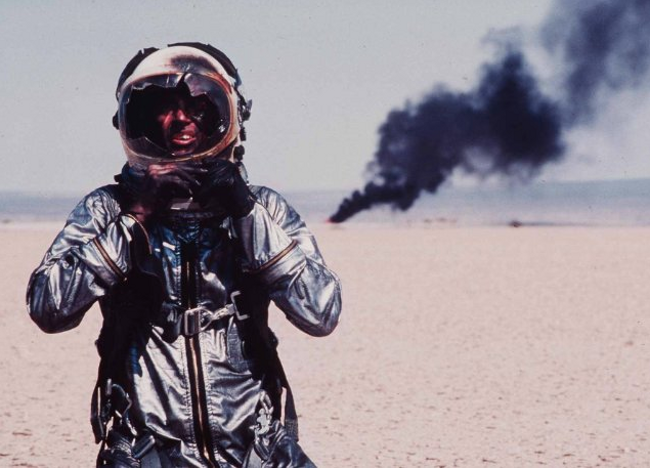
Have you got it? Sam Shepard in 1983's The Right Stuff about NASA's early Mercury 7 astronauts
Let’s assume you’re a fighting fit specimen, academically qualified in every conceivable scientific discipline - a leading jet test pilot with great contacts in Washington who could also knock up a solar panel from spit and a few Pringle tubes. Does that mean you definitely have the right stuff? Well, not necessarily. There are good reasons why space agencies, credible or otherwise, place such a great emphasis on emotional and socio-psychological stability. Mars is a long way away (a minimum of 35 million miles or 54.6 million km and a maximum of about 401 million km), you’ll have to go there in a tin can with very little room to move, you cannot pick your shipmates, and there’s every likelihood that you will die on launch, en route, on arrival, or very shortly afterwards. It’s a lot to think about, and there’ll be plenty of time to dwell on it.
Step One: prepare for your journey
The distance from Earth to Mars varies enormously, but at its nearest Mars is less than 35 million miles (54.6 million kilometres) away. So what can you do now to prepare yourself for those mental, social and psychological challenges that lay ahead? When George W Bush in 2004 confirmed the US would target a manned mission to Mars, concerns over extended periods of isolation and confinement were already being raised.
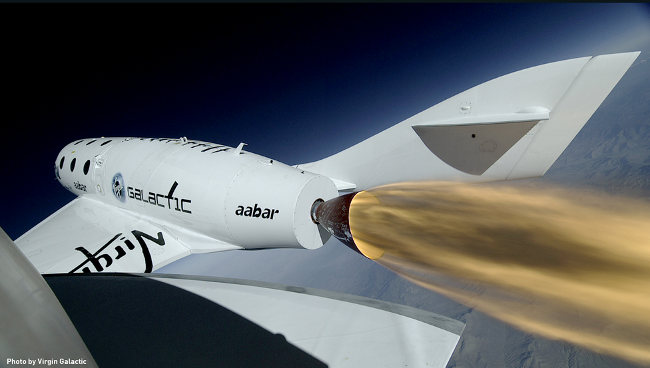
Virgin Galactic's SpaceShipTwo test-fires its engines
At that time University of California professor Albert Harrison, PhD, told the American Psychological Association: “Unprecedented periods of confinements, people being away for three years or more, the period of isolation, the lack of capability to rescue people - all these things become intensified in the case of Mars.”
He explained that the stress of being in an enclosed space with a small group of people for long periods of time can result in cognitive decline, depression and interpersonal conflicts in an otherwise well-adjusted group. Even minor problems could easily escalate into a disaster in an environment already fraught with danger.
Ubuntu creator and cosmonaut Mark Shuttleworth told The Reg mental profiling was at least as important as physical fitness for his mission. Shuttleworth went to the ISS via Soyuz mission TM34 in April 2002 and spent a solid week in Moscow being prodded and poked before the trip.
There were brain scans, blood tests and, ahem, "probes" but psychological screening was the other part of the week, he said.
"It's not so much about physical fitness - there is a treadmill in space but you can easily float past it," according to Shuttleworth who reckoned lack of physical fitness wouldn't preclude a lot of potential space candidates. "They are interested in whether you are likely to have a catastrophic issue that will cause them to abort the mission early," he said.
"They [the Russians] blaze a trail on long duration on crewed flights. They do a lot of work on the psychological of people who will be up there for a long time. They want to know those who don’t get on well and who will be very disruptive."
The Russian space station Mir, which operated from 1986 to 2001, and the ISS – which has now been manned continuously for almost 13 years – have afforded the best opportunities to study some of the long-term effects of living in space (albeit in a larger environment and with a fixed safe return date). Five cosmonauts have spent more than 300 days in space in a single stint, with Valeri Polyakov lasting 437 days on Mir.
The Russian space agency conducts many of its tests on deprivation and isolation at the Gagarin Cosmonaut Training Centre. Before Mir launched, cosmonauts were placed in isolation chambers for weeks, and left in grounded replicas of Mir in pairs for a month or more at a time.
You, in a box, a very small box, still on Earth
In 2010, the Mars 500 regime saw six men fresh from a strenuous year-long training programME, sealed inside mock ship for a 520-day Mars analogue mission, broken only by three suited-up “space walks” halfway through the mission.
Mars 500 was deemed a great success for space research when all six individuals left the compound mentally and physically unscathed after 18 months in confinement. Findings are still being analysed, but include new insights into ideal rest patterns, the ways in which Mars travellers might process salts, and the ideal times of day to plan critical missions.
“These results are showing why we participated in the Mars 500 study,” Jennifer Ngo-Anh, European Space Agency study manager, said.
What to bring...
Yourself, a bottle and a sense of humour! No, not really – this is interplanetary spaceflight to a hostile environment, not an HR training exercise. What you really need to bring are the essential tools for transportation, survival, scientific experiment, maintenance and construction – with very few frills to add to the already substantial payload.
Some cargo is relatively obvious – fuel, drinking water, intravenous fluids, oxygen (or enough additional water to create oxygen), nutrients and supplements, medicines, tools, clothes, suits, exercise machines, communications devices and so on - but some is less so. That’s why, skeptical though we remain, some sort of 2030 equivalent of a 3D printing factory would certainly go some way to filling in any unforeseen inventory blanks and reducing launch storage demands.
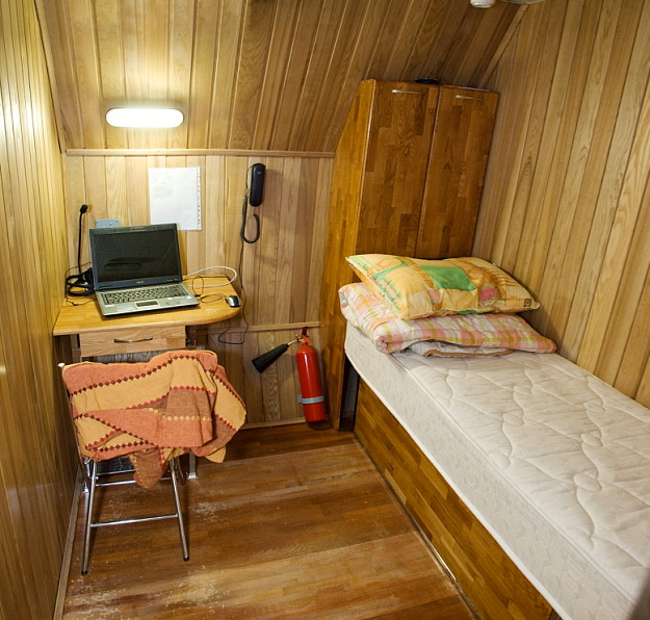
Sauna-like quarters aboard the Earth-bound Mars 500
Food, as you might expect, would be limited to long-life, low-weight, high-nutrition snacks, and may allow little for taste or diversity. Dr Michele Perchonok, food scientist at NASA’s Johnson Space Center in Houston, has said: "If we go to Mars, that’s a two-and-a-half year mission, so the food would need a five-year shelf life. We want to make things as compact as possible and as lightweight as possible."
And surprisingly, there is currently room for picky eaters on the astronaut programme, although we'll have to wait and see if that remains the case on more arduous inter-planetary missions: "With emerging preservation technologies, foods have a much higher quality once they’ve been processed, and with higher quality comes higher nutrition. Now astronauts have around 160 to 180 unique items which they can choose from."
One thing that crops up repeatedly in any conversation about proposed Mars missions, from the 1950s to the present day, is the concept of staying happy and "keeping busy" on the voyage when there aren’t any scientific, biological or maintenance tasks to be done. Digital content is close to zero-weight payload, so multimedia entertainment should prove little problem, but how have real-life astronauts spent their down-time in space? Well, there are famously two golf balls on the Moon, hit by Apollo 14 astronaut Alan Shepard with a six-iron head he snuck into his suit pocket and fitted to a sample collection tool.
But more recently, anyone with more than a passing interest in space will have watched films of ISS residents reading books, watching films, taking photos, "gourmet" cooking and playing games.
No room to swing a golf club? Bring a guitar
Chris Hadfield spent a good amount of time playing guitar, and recorded a cover of Space Oddity that ensured his YouTube immortality. Prospective Mars candidates crave new and different extras in this extreme form of Desert Island Discs. Talking to The Guardian recently, a few of those applicants for the Mars One one-way mission revealed their own luxury items. For the record, Erica Meszaros would take a stuffed toy mongoose, and Josh Richards would take Amanda, his ukulele.
Will you survive?
Assuming craft will soon be available that can physically take human payloads to Mars, by far the greatest threat to life on the voyage is radiation, caused by solar particles and galactic cosmic rays. University of Notre Dame professor Kristin Shrader-Frechette recently told USA Today that this made any imminent mission an ethical no-go. “We're talking about a lot of ionizing radiation, almost a guarantee for cancer, and you are really close to the edge of the range for lethal exposure. If we can't get shorter transit times in space, and we can't get better shielding, then we really can't do a Mars spaceflight," the prof said.
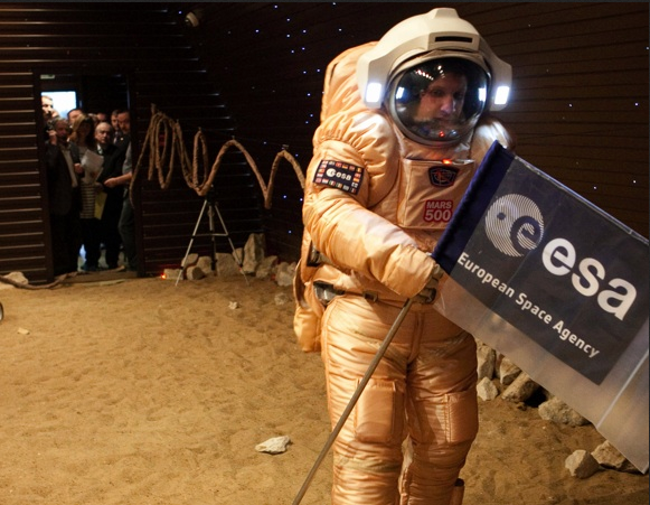
Learning to walk on the surface of Mars, which has just 38 per cent of the gravity of Earth
So how much is “a lot” of radiation? Well, a report published earlier this year in the journal Science titled "Measurements of Energetic Particle Radiation in Transit to Mars on the Mars Science Laboratory" revealed that the spacecraft containing the Curiosity Rover for its 253-day, 350-million-mile (563 million km) trip to Mars, modelled measurements of radiation dose equivalent for even the shortest round-trip with current propulsion systems and comparable shielding at 0.66 Sievert (Sv) in a range of plus or minus 0.12 Sv.
NASA lifetime astronaut limits are between 0.6 and 1.2Sv, depending on sex and age. So that's at best more than half a career of radiation exposure, even disregarding time spent on the surface, or indeed on any preparatory missions.
Without radical progress in reducing the speed of the Mars journey and breakthroughs in increasing the radiation shielding of craft, suits and other habitats, human trips to Mars will likely be ruled out by NASA for exposing astronauts to more than a three per cent increase in "Risk of Exposure-Induced Death" for fatal cancer, a threshold set in the aftermath of Hiroshima.
You're not ready for what's next
The ever-chirpy Mars One team is working hard to play down the dangers of radiation.
But should you succeed in reaching Mars, it’s safe to assume nothing that you’ll have trained or equipped yourself for will really have prepared you for what’s next. It may be the second-most-habitable planet in the solar system for Earthlings, but it’s still an extremely hostile environment that space agencies can currently only size up using Rover data, and which they are entirely unable to replicate here.
Words like dry, cold, windy and volatile cannot really do the place justice. Gravity is about 38 per cent that of Earth, and temperatures average around -60°C (-76°F). Low thermal inertia contributes to freezing winds estimated to be upwards of 90kmph (60mph). Abrasive dust storms lasting months on end were witnessed by Mariner 9 in 1971. And although there is some water vapour in the atmosphere and perhaps two per cent by weight in surface soil, the atmosphere is mostly carbon dioxide. So CO2 snowfall is a possibility.
This November NASA plans to send its MAVEN (Mars Atmosphere and Volatile EvolutioN) probe to orbit the planet and study its atmosphere to judge its history of depletion, its evolving climate, the current state of upper atmosphere and ionosphere, and the ongoing effects of solar winds on water and volatile compounds. This should provide insights that give scientists a timeline of reference, but is unlikely to discover any silver linings for Mars pioneers.
For now, those testing technology for prospective missions to Mars only really have the Haughton-Mars Project to help them approximate as close as possible the conditions of Mars on Earth. NASA and the Canadian Space Agency (CSA) tested prototype Mars spacesuits in this Canadian high-Arctic impact crater in 2000, but harsh as this polar desert setting is, it doesn’t come anywhere even close to the extreme conditions of Mars. Still, techies have to start somewhere.
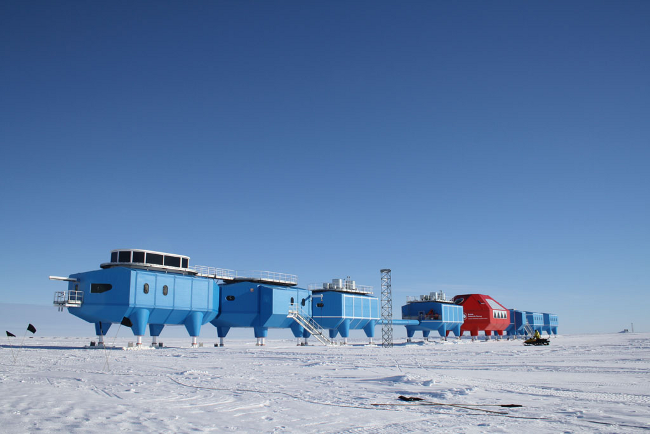
The Halley Research Station - a podular model for off-world living
Could you live on Mars? The ultimate goal is obviously a thriving Mars colony – a permanent, largely self-sufficient base populated by humans, with sporadic new arrivals from mother Earth to enrich the community. But is this vision really any nearer to reality than it ever has been in sci-fi or our dreams? While speaking hypothetically with the Institute of Physics, Dr Richard Zurek, chief scientist in the Mars Program Office at NASA Jet Propulsion Laboratory (JPL) reckoned the combination of extreme cold, lack of oxygen, and higher than usual levels of radiation would confine astronauts to enclosed vehicles and occasional walks in spacesuits before assembling the first buildings.
The next step would be to sort out a power source, which Zurek suggests could be "either a few acres of solar panels or maybe a nuclear power plant". Using this energy, settlers could in theory extract oxygen and water from the atmosphere and surface minerals, while working on sourcing any subterranean frozen water reserves.
Going underground
Mars One would build its shelters underground to reduce exposure to the elements, which isn’t a bad plan. But for now the only solid experience we have of developing basic habitats for survival in conditions even approaching such extreme levels, is at arid research stations. NASA is still testing landscape habits out in the Arizona desert using hard cylindrical shells for radiation protection, and inflatable living quarters for comfort. And since February 2012, the British Antarctic Survey has been based in the incredible-looking Halley VI station, a string of eight modular buildings on stilts with ski feet.
These pods cope with lows of -55°C (-67°F) and high-speed winds armed with abrasive ice particles. Each of these building projects weighs, well, as much as a house – but it’s Earth-bound work like this that continues to further scientific understanding and spark conceptual ideas for space habitation. Until subsequent generations can master terraforming and begin warming up the Martian atmosphere, ingenious habitats are the only way forward.
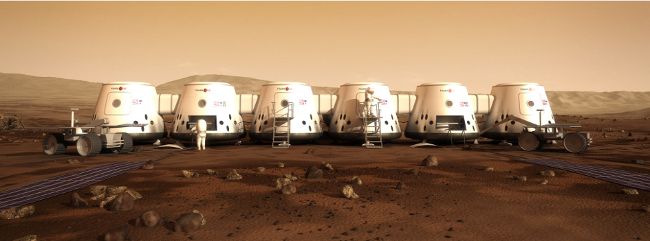
How Mars One sees the Halley Research Station on the Red Planet
Will you get back to Earth?
Propulsion on any space mission is generally thought to be the “easy bit”, but that’s only relative to the extreme difficulty and danger of launch, landing and living. Deep space is a hostile place more than capable of irradiating and emaciating humans over very short periods of time.
It’s difficult enough to send a functional object into Earth orbit. It’s incredibly more complex to get a payload such as an exploration rover safely to Mars. Pushing a 1,000+ tonne deep space vehicle full of astronauts, life-sustaining supplies, landing craft, habitat materials and other equipment out of Earth’s atmosphere to travel for half a year and around 35 million miles (56 million km) to Mars, is currently impossible. Planning to bring any of our plucky pioneers back isn’t even in the reckoning.
Going to Mars, or even into space, would be a high-risk-high-reward experience, especially for science fans. And it's certainly a possibility, even if remote at this stage. Jumping into a ship, swooping through the Martian dust clouds and dropping back into suburbia without a scratch and in time for tea and Doctor Who? That's going to be another matter. ®